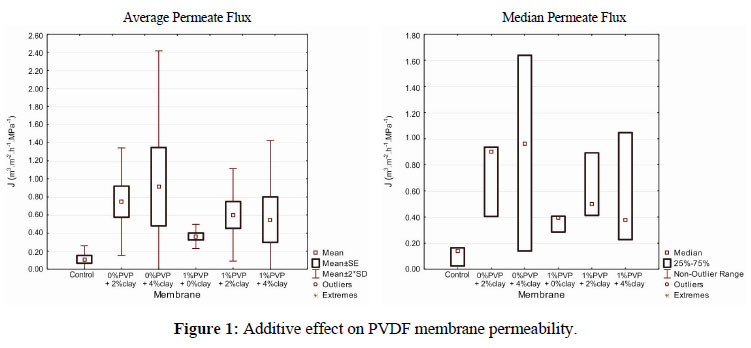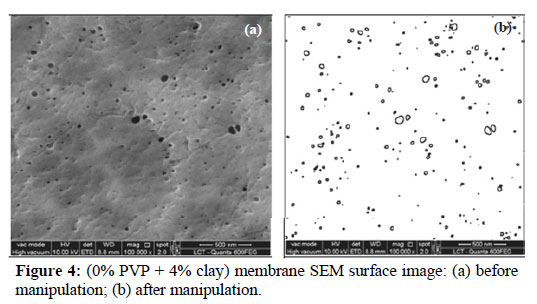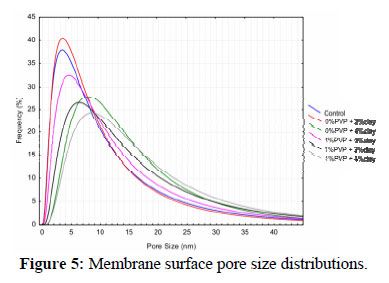In this study, a comparison between neat poly(vinylidene fluoride) (PVDF) membrane and composite (PVDF-Nanoclay and PVDF-PVP-Nanoclay) membranes is presented. All membranes were synthesized by the phase inversion process, using 18% PVDF, n-methylpyrrolidone as solvent and water as the non-solvent. Demineralized water cross-flow permeation tests were conducted to evaluate the membranes performance. Scanning electron microscopy (SEM) images of the membranes surface and cross-section and water contact angle measurements were used to estimate additives effects on membranes morphology. The results indicate that dopant addition affected membrane permeate flux and morphology. The 4% nanoclay composite membrane resulted in the highest ultrapure water permeability (0.9130 m³.m-2.h-1.MPa-1), lower hydraulic resistance (3.27´10+12.m-1), lower contact angle (87.1º) and highest surface porosity (0.95%). Furthermore, it was verified that the membrane surface porosity increased with increasing clay nanoparticles concentrations. It was observed that the morphology of the membranes with clay nanoparticle addition is characterized by a thin surface layer, with macro-pores, a thin bottom layer, which has a sponge-like structure with micro-pores and a thick intermediate layer, with finger-like pores and macro-pores. It was also verified that the introduction of PVP promotes a denser morphology compared with membranes without it. Based on the SEM surface and cross-sectional images and permeability tests, it became evident that the internal pore morphology plays an important role in membrane performance, because the higher the frequency and extent of the finger-like pores in the intermediate layer the higher is the membrane permeability. These preliminary results indicated that the use of nanoclay as an additive for membrane casting is a promising procedure for improving membrane performance for water and wastewater treatment.
Ultrafiltration; Clay Nanoparticles; Poly(vinylidene fluoride); Water Treatment; Performance; Morphology
















